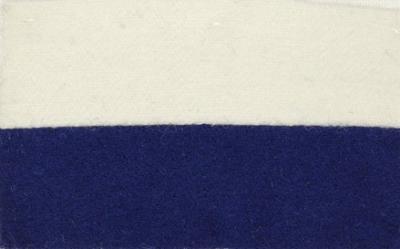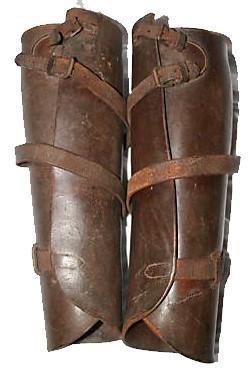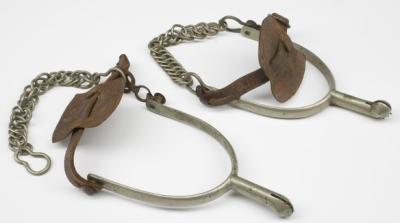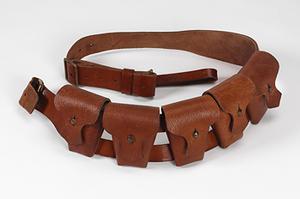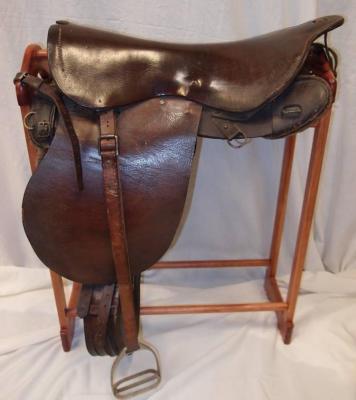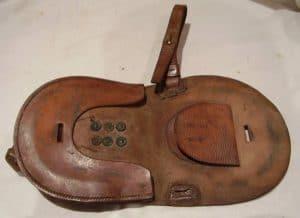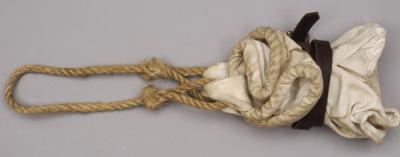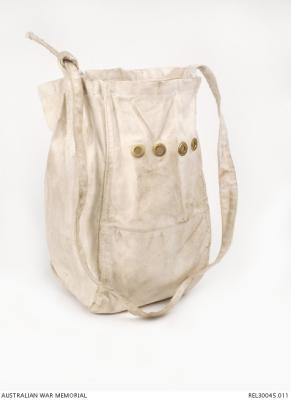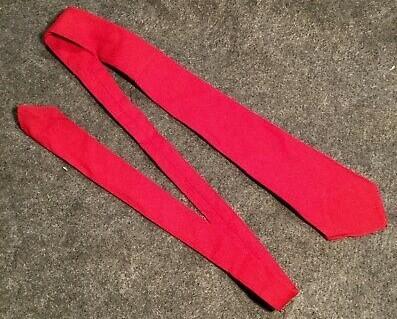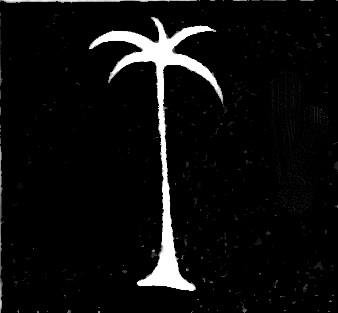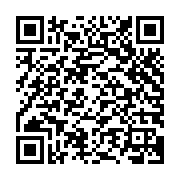Formation Signs - Desert Mounted Corps (World War 1)
Each Corps and Division of the Australian Imperial had a divisional sign. This was a distinct design and not the same as the shoulder flash placed on uniforms. It could be used to mark equipment or supplies intended for a specific unit. The Desert Mounted Corps sign was a palm tree in white on a black background.
The Desert Mounted Corps was an army corps of the British Army during the First World War, of three mounted divisions renamed in August 1917 by General Edmund Allenby, from Desert Column. These divisions which served in the Sinai and Palestine Campaign had been formed by Australian light horse, British yeomanry, and New Zealand mounted rifles brigades, supported by horse artillery, infantry and support troops. They were later joined by Indian cavalry and a small French cavalry detachment.
Details
Details
During World War 1, Australian Corps and Division formation signs were based on a rising sun design although the number of points varied between 9 and 13 This design was based on a trophy of arms which also led to the creation of the rising sun cap badge, During World War 1, numbered corps utilised Roman numerals. In World War 2, Australian Corps used Arabic numerals. The Desert Column and the Desert Mounted Corps formations used white on black silhouettes similar to those used by the Australian Army in World War 2.
The marking of military equipment is not a new phenomena. A broad arrow, is a stylised representation of a metal arrowhead, comprising a tang and two barbs meeting at a point. It is a symbol used traditionally in heraldry, and later by the British government to mark government property.
The broad arrow was used in England from the early 14th century, and more widely from the 16th century, to mark objects purchased from the monarch's money, or to indicate government property. It became particularly associated with the Board of Ordnance, and later the War Department and the Ministry of Defence. It was exported to other parts of the British Empire, where it was used in similar official contexts.
The use of markings on Australian military vehicles expanded and became more sophisticated following mass production and the mechanization of armies.
Australian Army Museum of Western Australia
Australian Army Museum of Western Australia
Other items from Australian Army Museum of Western Australia
- Colour Patch - 11 Battalion Australian Imperial Force
- Colour Patch - 16 Battalion Australian Imperial Force
- Colour Patch - 44 Battalion Australian Imperial Force
- Stohwasser Leather Leggings
- Australian Army Issue Spurs
- 1903 Pattern Bandoliers
- World War 1, 1912 Universal Pattern Saddle
- World War 1, 1912 Universal Pattern Saddle - Equipage - Horse Shoe Carrier
- World War 1, 1912 Universal Pattern Saddle - Equipage - Canvas Water Bucket
- World War 1, 1912 Universal Pattern Saddle - Equipage - Saddle Wallets
- World War 1, 1912 Universal Pattern Saddle Equipage - Fodder Bag
- World War 1, Red Necktie of Convalescent Blue Uniform

